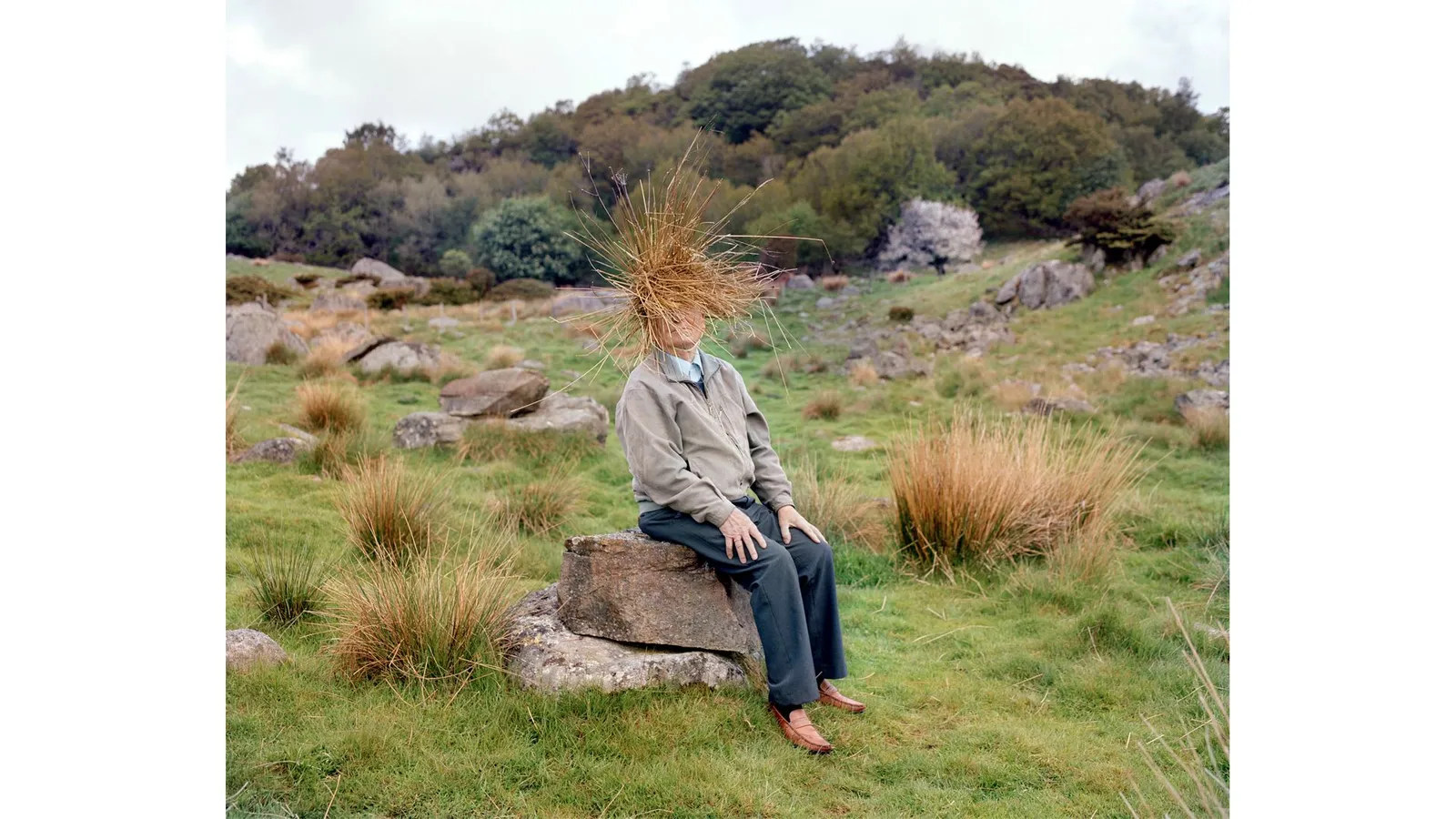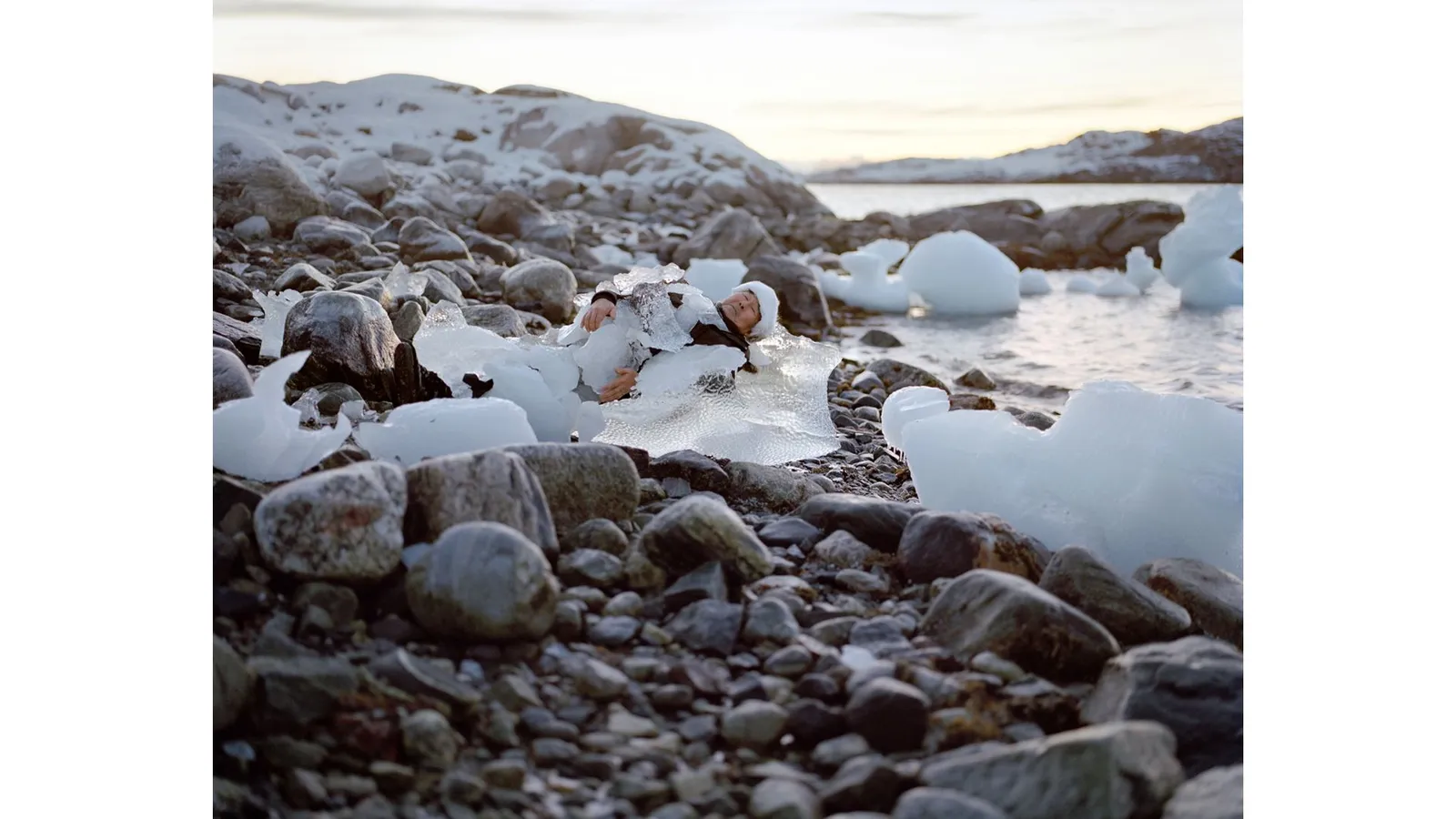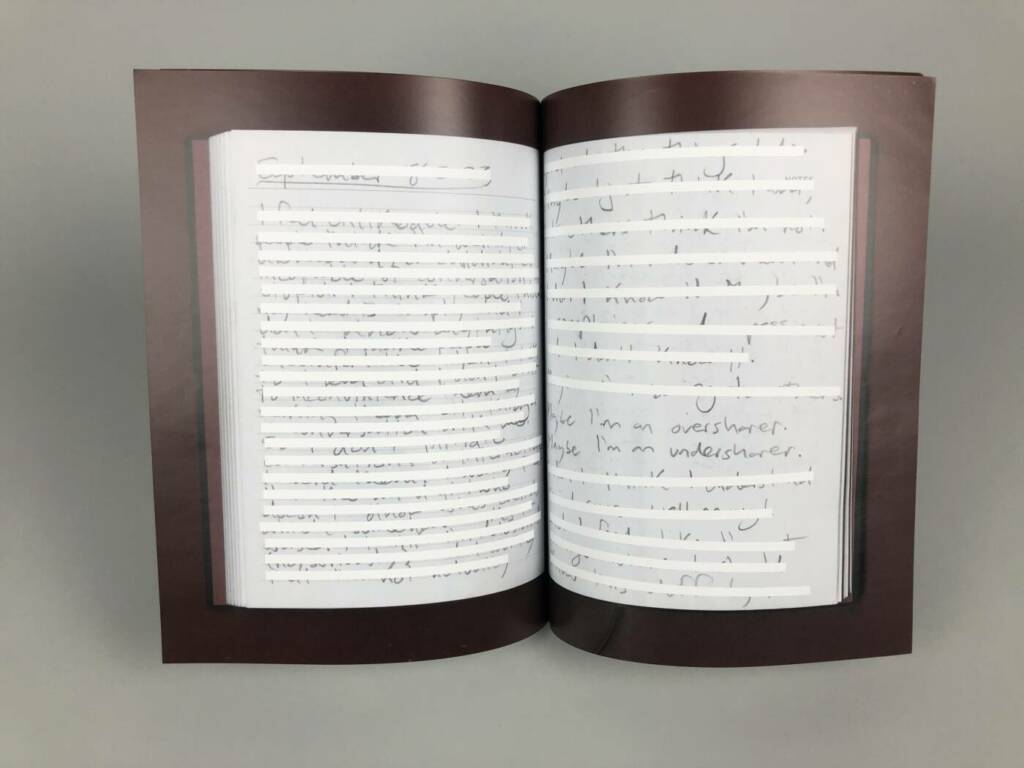BOOK STACKS
Blood, Sweat and Tears: An Accidental Trilogy
Below, are three book stacks that demonstrate the many stages of murder, and getting caught. This trilogy was accidental, as I had initially intended to create 3 separate book stacks. But upon further observation and reflection, I noticed that each book stack fit together like a story when placed in a certain order. The first image (Part 1: Blood) depicts the act of murder. I chose to have someone walk past the book stack in the background of the image as a reference to the victim of the murder. Furthermore, the first letters of each book title create an acronym that spells “STOP.” I intentionally picked books that are red as an allusion to stop signs. The second image (Part 2: Sweat) represents the murderers getting caught. For this stack, I intentionally chose book titles that, when placed together, would sound like a news headline. In the final image (Part 3: Tears), the criminals are shown experiencing guilt and regret for their malicious actions. I cut out a portion of the book stack from the image to mirror the shame the the murderers are experiencing, as if to mimic the urge to hide away from the public eye.
Part 1: Blood

Part 2: Sweat

Part 3: Tears

ENVIRONMENTAL ARTIST RESEARCH
Eyes as Big as Plates (Riitta Ikonen and Karoline Hjorth)
Riitta Ikonen and Karoline Hjorth have assigned themselves with the task of photographing people in their 60s, 70s and 80s in an outdoor setting, wearing part of the landscape on their bodies, as though it is part of their fashion. The photographs have a strong resemblance to National Geographic images. Older individuals do not often get the spotlight when it comes to photography. However, Ikonen and Hjorth have chosen to photograph this demographic, in order to celebrate the long lives and captivating stories of these people.
The artists’ initial goal was to illustrate Norwegian mythology, but they have more recently moved away form this idea. They have decided to allow the story to unfold itself through the interaction between the landscape and the individual in the photographs. The title of this work, Eyes as Big as Plates, references an old Norwegian tale that involves a large-eyed troll or dog that lived under a bridge. Ikonen and Hjorth have tried to emulate the unsettling stare of the troll through their subjects in their photographs. The individuals in their photos often have an intense and powerful gaze toward the camera.
What is striking to me about these images is how the artists are able to emerge their subjects into the landscape, and portray their subjects as one with the landscape. In Eyes as Big as Plates # Jakob (Greenland 2015), it takes you a minute before noticing that there is a person in the image. The individual is well-camouflaged into the landscape with his body covered in ice and snow, while the colour of his jacket blends with the rocks.
The relationship between the landscape and the individual and the landscape is one that is considered and acknowledged by the artists. In Eyes as Big as Plates # Halvar I (Norway 2011), a retired farmer is photographed on his own family’s farmland. The relationship between the farmer and his landscape almost serve as a portrait of himself and his familial roots.

Eyes as Big as Plates # Halvar I (Norway 2011)

Eyes as Big as Plates # Jakob (Greenland 2015)
ENVIRONMENTAL VIDEO (research)
Pileated Woodpecker
CALLS: The Pileated Woodpecker call consists of a fast staccato high pitched repeated sound. The call can last up to several seconds. They have a second call that is more spaced out and is lower in pitch. It usually sounds like cuk, cuk, and indicates danger, or marking of territory.
OTHER SOUNDS: Woodpeckers are most known for their drumming sound that they make by repeatedly pecking their beak against a tree trunk. This sound may be used to solicit mating/courtship, or to alert others of a predator near a nest. For males, drumming may also be used to mark or defend their territory.
To hear samples of the calls and songs of the Pileated Woodpecker, click on the following link:
https://www.allaboutbirds.org/guide/Pileated_Woodpecker/sounds
Eastern Screech Owl
SONG: Their most common song is a high pitched tremolo that can sometimes resemble a soft “purr.” It is a 3-6 second long song that the screech owl uses to keep in touch with their family or mate. The second song is one called the whinny. It is a 0.5–2 second long shrill that resembles the sound of a horse neighing, and is used to defend territories.
CALLS: Screech Owl calls can often sound like a soft, low “caw” or “hoot” sound. As their name suggests, these owls can also produce a screeching call that is used to indicate danger, alarm, or agitation.
To hear samples of the calls and songs of the Eastern Screeching Owl, click on the following link:
https://www.allaboutbirds.org/guide/Eastern_Screech-Owl/sounds
Chickadee
SONGS: Across the majority of North America, you can typically hear a straightforward, melodious song consisting of two or three clear whistled notes, often resembling “fee-bee” or “hey, sweetie.” However, in the Pacific Northwest, the song differs slightly, featuring three or four notes at the same pitch.
In many regions within its range, male birds commence their singing in mid-January, and as the winter season unfolds, the frequency of their song gradually intensifies. Interestingly, females in this species also occasionally join in with their own songs.
CALLS: Chickadees employ their distinctive “chickadee-dee-dee” call, which includes an increasing number of “dee” notes, as an alarm signal when they sense danger. Additionally, they utilize a specific gargling call, particularly in confrontational situations, such as when a lower-ranking bird approaches a higher-ranking one. This call is also exchanged between members of a pair.
In the case of Black-capped Chickadees, they emit a high-pitched “see” call as a high-intensity alarm signal, typically in response to the presence of a rapidly approaching predator. When other chickadees hear this alarm, they instinctively freeze in their current position until they receive the reassuring “chickadee-dee” call, which signifies that the threat has passed. Notably, the high “see” calls are most frequently produced by male chickadees.
OTHER SOUNDS: Nestling chickadees employ a defensive strategy by emitting a sudden and forceful hissing sound while simultaneously striking the interior of their nest cavity when they perceive an intruder peering inside.
To hear samples of the calls and songs of the Chickadee, click on the following link: https://www.allaboutbirds.org/guide/Black-capped_Chickadee/sounds#
Loon
Loons exhibit a diverse range of vocalizations, comprising four primary types: the wail, tremolo, yodel, and hoot.
The wail, often the most frequently heard, is a haunting call employed by loons when they find themselves separated from their chick or in cases where their mate has not returned. It serves as an expression of their willingness to engage with others.
The tremolo, conversely, serves as an assertive response when loons feel disturbed by boaters or potential predators. This wavering call communicates their distress and encourages a move to a safer location. It also functions as a means of announcing their presence at a particular lake.
The yodel is another vocalization that signifies aggression and is typically emitted by males during confrontations. It plays a crucial role in territorial disputes, effectively conveying a message to nearby loons, asserting, “This territory belongs to us!” Interestingly, each male loon possesses a unique signature yodel, which they may modify if they relocate to a different territory.
Lastly, the hoot is a softer, brief call used to symbolize curiosity and/or happiness. Loons employ hoots to maintain contact with one another, with parents using hoots to communicate with their chicks and mates hooting to stay connected with each other.
ENVIRONMENTAL VIDEO (brainstorm)
IDEA 1: Hanging from a tree until we fall
Serves as a thought-provoking symbol that unites environmental concerns with the human experience. It underscores the importance of perseverance, resilience, and responsible stewardship of our natural world while acknowledging the inevitability of occasional setbacks in our journey toward a sustainable future.
IDEA 2: Hide and seek in the forest (only 1 toe sticking out, for example)
Hide and seek in the forest is more than just a childhood game; it’s a transformative encounter that binds individuals to the natural world. Through sensory immersion, physical interaction, and environmental awareness, participants learn not only about the forest but also about themselves. This connection between body and nature cultivated through play endures, fostering a lifelong reverence for the natural world and a desire to preserve its beauty and vitality.
IDEA 3: Imitating the sounds we hear in nature (a compilation – cut back and forth between real sounds in arboretum and us imitating them)
Embracing the harmonious symphony of nature, our project focuses on the art of imitating the diverse sounds we encounter outside. This endeavor offers a unique opportunity to compile an auditory journey, seamlessly weaving together recordings from the serene landscapes of the arboretum and our own attempts at replicating these natural sounds. Here, we immerse ourselves in the richness of the environment, capturing the chirping of birds, the rustling of leaves, the distant echoes of wildlife and more. It’s an exploration that celebrates the interconnectedness of humans and nature and invites listeners to experience the beauty of the outdoors in a novel and creative way.
ENVIRONMENTAL VIDEO (progress)
During our first outing to film our video, Hallie and I went to the mall. We went up to people and asked them to be in our video. However, this proved to be difficult, because many people said no and it was hard to find people who said yes.
For our second attempt, we went to campus and stood outside with handmade signs that said ‘BE IN OUR VIDEO’ and another that said ‘MAKE A BIRD SOUND. JUST 5 MINS OF UR TIME!’ This was much more effective, because we weren’t putting people on the spot. Their participation was a little more voluntary.
ENVIRONMENTAL VIDEO (final)
Primal Instinct
In this project, Hallie and I aimed to bridge the gap between humanity and nature. We wanted to underscore the primal connection by peeling back the layers of verbal communication, reducing individuals to their raw ability to make sounds. Our choice to feature people of various ages highlighted the intrinsic nature of mimicry and noise-making. Typically, we witness infants engaging in such behaviour as they explore their bodies and vocal capacities for communication. However, societal norms often lead us to stifle these tendencies as we age. Yet, the urge to vocalize and replicate sounds remains deeply rooted and natural. Throughout the filming process, which involved a diverse group, including strangers, we shared many moments of laughter. The experience became a genuine bond among humans, highlighting the collective inclination to express ourselves through vocalization and imitation.
ENVIRONMENTAL VIDEO (updated version)
Primal Instinct
ARTIST BOOK (in progress)
ARTIST BOOK (pdf version)
In this project, my aim was to expose the most vulnerable facets of myself while paradoxically concealing them entirely. I extracted phrases from my journal, divorcing them from their original context. Deliberately selecting sentences with universal resonance and posing reflective questions, I sought to create a connection with readers. Having kept my emotions bottled up for an extended period, journaling became my self-reliant method for processing feelings. By publishing this book, I am affirming the validity of my thoughts, emotions, questions, and actions, acknowledging that they deserve to be both heard and seen. My journal, a cherished possession, holds my most intimate thoughts, and in sharing them with the world, I aim to honour and give voice to those personal reflections.
ARTIST BOOK (hard copy)
ARTIST MULTIPLES
With this sock puppet project, I set out to craft a unique form of emotional support tailored specifically for adults. It’s striking to observe that adults often struggle with emotional regulation, while children naturally navigate their feelings through instinctive behaviours. Take, for instance, a child’s tendency to fidget in line out of boredom or the comfort they find in a blanket or stuffed animal. Despite the common belief that adults surpass children in emotional control, my perspective is that adults excel in concealing their emotions, resulting in internalized challenges.
In my view, adults are constrained by societal expectations, preventing them from openly embracing emotional support objects as children do. To address this, I’ve presented an emotional support sock in a sophisticated packaging, deliberately targeting an adult audience. My intention is twofold: to tap into the inner child of adults, bringing smiles to their faces, and to create a shared experience that fosters connections among individuals. Whether utilized as a quirky party accessory or a personal comfort item, this creation is envisioned as a catalyst for joy and shared moments.












